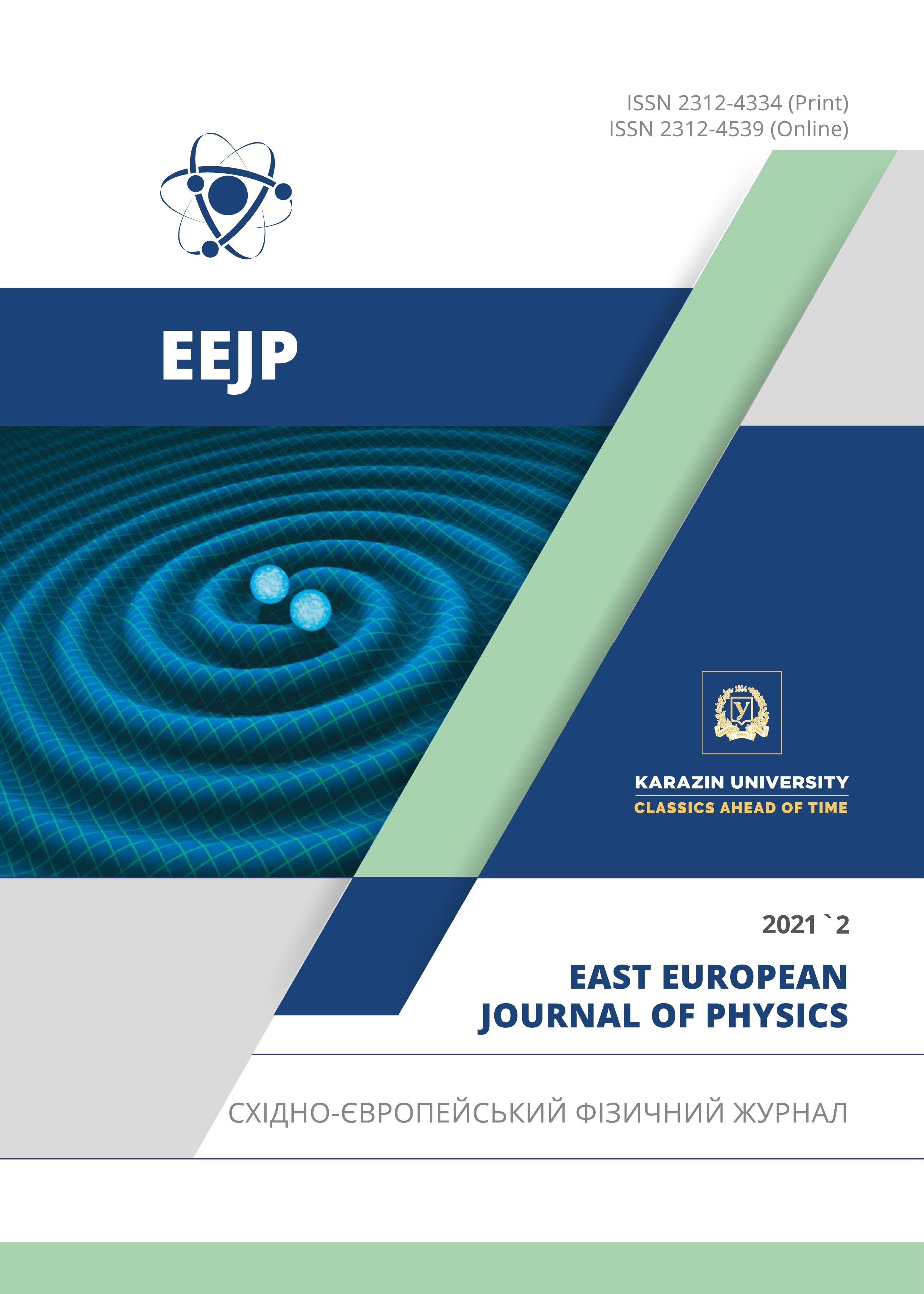Influence of Electron Injection on the Characteristics of a Hollow Cathode Glow Discharge
Abstract
The article presents the results of experimental studies of a glow discharge with a hollow cathode in helium and argon gases using an auxiliary discharge as an electron emitter. The authors proposed to make the electrode common for both discharges in the form of a cylindrical metal mesh. The advantage of this design is explained as follows. The connection between the discharges is carried out through holes in the grid with a geometric transparency of 0.2, which makes it possible not only to smoothly control the glow discharge current, but also to enhance the discharge current. Plasma is known to be one of the most efficient electron emitters; however, its use as a cathode in devices with a glow discharge at low gas pressures is complicated by the fact that a grid with small holes is required to separate the electron flow from the plasma, and it is impractical to use such a system in view of low mechanical strength of the grid Since the hollow cathode works effectively at low gas pressures, the release of an electron flux from the plasma of some auxiliary discharge is possible with much larger holes in the grid separating the plasma and the hollow cathode cavity. In this case, the grid can be made such that it can withstand sufficiently high thermal loads and can operate in typical discharge modes with a hollow cathode. The injection of electrons into the cathode cavity of the glow discharge changes the radial distribution of the glow intensity, the width of the cathode dark space, and other parameters of the plasma in the cathode cavity. The influence of electrons penetrating from the auxiliary discharge into the cathode cavity of the main discharge becomes significant when the current of these electrons is comparable to or exceeds the current of electrons leaving the grid cathode surface as a result of γ-processes. In parallel with the measurement of the optical and electrical characteristics of the hollow cathode glow discharge plasma, measurements of the electron concentration were carried out by the microwave sounding method. The entire current of the auxiliary discharge penetrates into the cavity of the main discharge; however, after acceleration in the cathode dark space, the electrons penetrating from the auxiliary discharge ionize gas atoms and noticeably increase the current of the main discharge. Additional ions formed due to the ionization of the gas by the injected electrons knock out new electrons from the cathode surface, which makes it possible to increase the discharge current.
Downloads
References
N.V. Gavrilov, and A.S. Kamenetskikh, ZhTF, 77(3), 12-16 (2007), https://journals.ioffe.ru/articles/viewPDF/9070. (in Russian)
A. S. Klimov, and S.A. Ostanin, Proceedings of TUSUR University, 20(4), 26-29 (2017), https://doi.org/10.21293/1818-0442-2017-20-4-26-29. (in Russian)
N.V. Gavrilov, D.R. Emlin, and A.S. Kamenetskikh, Tech. Phys. 53, 1308–1313 (2008), https://doi.org/10.1134/S1063784208100083.
V.V. Denisov, Y.K. Akhmadeev, N.N. Koval, I.V. Lopatin, and E.V. Ostroverkhov, Russ. Phys. J. 62, 563-568 (2019), https://doi.org/10.1007/s11182-019-01747-3.
B.I. Moskalev, Разряд с полым катодом [Hollow cathode discharge], (Energiya, Moscow, 1969), pp. 184. (in Russian)
A.S. Metel, S.N. Grigoriev, Yu.A. Melnik, and V.P. Bolbukov, Instruments and Experimental Techniques, 55, 122–130 (2012), https://doi.org/10.1134/S0020441211060170.
V.A. Timanyuk, N.G. Kokodiy, and F.G. Diaghileva, Papers SWORLD Transport, Engineering, Physics and Mathematics, 2(46), 95-100 (2017), https://www.sworld.com.ua/ntsw/117-2.pdf. (in Russian)
C. Yuan, A.A. Kudryavtsev, A.I. Saifutdinov, S.S. Sysoev, R. Tian, J. Yao, and Zh. Zhou. IEEE Transactions on Plasma Science, 45, 3110-3113 (2017), https://doi.org/10.1109/TPS.2017.2758170
V.A. Lisovskiy, D.I. Khilko, R.O. Osmayev, and V.D. Yegorenkov. Eur. J. Phys. 40, 045203 (2019), https://doi.org/10.1088/1361-6404/ab1a59.
Authors who publish with this journal agree to the following terms:
- Authors retain copyright and grant the journal right of first publication with the work simultaneously licensed under a Creative Commons Attribution License that allows others to share the work with an acknowledgment of the work's authorship and initial publication in this journal.
- Authors are able to enter into separate, additional contractual arrangements for the non-exclusive distribution of the journal's published version of the work (e.g., post it to an institutional repository or publish it in a book), with an acknowledgment of its initial publication in this journal.
- Authors are permitted and encouraged to post their work online (e.g., in institutional repositories or on their website) prior to and during the submission process, as it can lead to productive exchanges, as well as earlier and greater citation of published work (See The Effect of Open Access).








